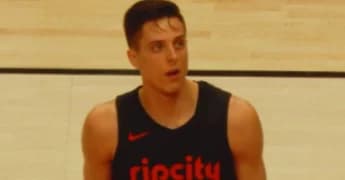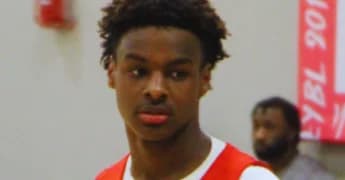In a highly anticipated comeback, Chicago Bulls point guard Lonzo Ball is set to make his preseason debut against the Minnesota Timberwolves on Wednesday night, marking a significant milestone after a grueling two-and-a-half-year absence from the court. As he prepares to step back into the NBA spotlight, Ball is not only excited but also mindful of the need for a cautious approach to his return. Explore Lonzo Ball’s comeback strategy, featuring a 16-minute restriction to ensure his safe return to the court.
The decision to implement a minutes restriction is rooted in a careful management strategy aimed at safeguarding Ball’s health as he transitions back into game action. Despite his eagerness to contribute, Ball and the Bulls’ coaching staff understand the risks involved in rushing his recovery, especially given his complex injury history. “We’ll have to manage it all year. That’s just the reality of it,” Ball stated during a media shootaround session. “COVID definitely set me back. It’s more about just getting my weight up. I lost like 10 pounds, so back to normal now. I feel a lot better, so I’ll be ready to play tonight.”
Lonzo Ball chatted with media after shootaround this morning ahead of his first game back tonight. Will be under a 16-minute restriction.
Only setback has been a brief bout of COVID, during which he says he lost about 10 pounds. Feels good to go tonight. pic.twitter.com/C8Givl9NxY— Julia Poe (@byjuliapoe) October 16, 2024
The last time fans witnessed Ball in action was on January 14, 2022, when he played against the Golden State Warriors, scoring 15 points and adding two rebounds and three assists. His performance that day was a testament to his potential; however, it was overshadowed by the emergence of his knee problems that have plagued his career. Since joining the Bulls from the New Orleans Pelicans in 2021, Ball has only participated in 35 games, a frustrating reality for both him and the organization. Despite the limited appearances, Ball showcased his ability to be an impactful playmaker, averaging 13.0 points, 5.4 rebounds, and 5.1 assists while maintaining impressive shooting percentages of 42.3% from the field and 42.3% from beyond the arc.
Lonzo’s journey through injuries began during his tenure with the Los Angeles Lakers and continued through his time with the Pelicans and Bulls. The issues escalated to a point where the Bulls had to shut him down, focusing on a long-term recovery plan. Last year, Ball underwent significant procedures, including a cartilage transplant in his left knee and a bone allograft, involving donor tissue. These complex surgeries represent the seriousness of his injuries and the lengths the Bulls have gone to ensure his safe return.
As Ball prepares for his return, it is essential to understand the broader implications for the Chicago Bulls. The team has invested heavily in Ball, recognizing his potential to elevate their play. When healthy, Ball’s unique skill set allows him to create opportunities for his teammates while also contributing as a scoring threat. His ability to facilitate plays alongside All-Stars DeMar DeRozan and Zach LaVine formed a promising trio before his injuries derailed the partnership. With the 2024 season looming, the Bulls are counting on Ball to reclaim his role as a key playmaker, and the management of his minutes will be crucial in navigating this recovery process as part of Lonzo Ball’s comeback strategy.
The question of whether Ball can return to his pre-injury form remains. While the 16-minute restriction is a sensible precautionary measure, it inevitably raises questions about how effective he can be while limited. The Bulls will need to strike a balance between nurturing Ball back to health and maintaining competitiveness in a league that has grown more challenging in his absence. This balancing act forms the cornerstone of Lonzo Ball’s comeback strategy, as both the player and the team aim for a seamless reintegration.
In the world of professional sports, the pressure to perform can often overshadow the importance of player health. Lonzo Ball’s situation is a stark reminder of this reality. The minutes restriction is not just a precaution; it represents a calculated strategy to ensure that one of the league’s promising talents does not rush back into action, risking further injury. The franchise’s willingness to prioritize his health speaks volumes about its long-term vision.
Moreover, the Bulls find themselves in a precarious position. With heightened expectations this season, they must navigate Ball’s recovery while striving for success on the court. This balance is delicate, as the organization must communicate effectively with fans and media about the necessity of a gradual return.
As Ball approaches this critical juncture in his career, it will be fascinating to observe how he adapts to this new reality. Can he rediscover his rhythm while managing the constraints placed upon him? The narrative surrounding Lonzo Ball’s comeback strategy will undoubtedly remain a focal point for fans and analysts alike throughout the season, making his journey one to watch closely. The success of this strategy may set a precedent for how teams handle the returns of players facing similar challenges, highlighting the importance of a measured approach in professional sports.
In a highly anticipated comeback, Chicago Bulls point guard Lonzo Ball is set to make his preseason debut against the Minnesota Timberwolves on Wednesday night, marking a significant milestone after a grueling two-and-a-half-year absence from the court. As he prepares to step back into the NBA spotlight, Ball is not only excited but also mindful of the need for a cautious approach to his return. Explore Lonzo Ball’s comeback strategy, featuring a 16-minute restriction to ensure his safe return to the court.
The decision to implement a minutes restriction is rooted in a careful management strategy aimed at safeguarding Ball’s health as he transitions back into game action. Despite his eagerness to contribute, Ball and the Bulls’ coaching staff understand the risks involved in rushing his recovery, especially given his complex injury history. “We’ll have to manage it all year. That’s just the reality of it,” Ball stated during a media shootaround session. “COVID definitely set me back. It’s more about just getting my weight up. I lost like 10 pounds, so back to normal now. I feel a lot better, so I’ll be ready to play tonight.”
Lonzo Ball chatted with media after shootaround this morning ahead of his first game back tonight. Will be under a 16-minute restriction.
Only setback has been a brief bout of COVID, during which he says he lost about 10 pounds. Feels good to go tonight. pic.twitter.com/C8Givl9NxY— Julia Poe (@byjuliapoe) October 16, 2024
The last time fans witnessed Ball in action was on January 14, 2022, when he played against the Golden State Warriors, scoring 15 points and adding two rebounds and three assists. His performance that day was a testament to his potential; however, it was overshadowed by the emergence of his knee problems that have plagued his career. Since joining the Bulls from the New Orleans Pelicans in 2021, Ball has only participated in 35 games, a frustrating reality for both him and the organization. Despite the limited appearances, Ball showcased his ability to be an impactful playmaker, averaging 13.0 points, 5.4 rebounds, and 5.1 assists while maintaining impressive shooting percentages of 42.3% from the field and 42.3% from beyond the arc.
Lonzo’s journey through injuries began during his tenure with the Los Angeles Lakers and continued through his time with the Pelicans and Bulls. The issues escalated to a point where the Bulls had to shut him down, focusing on a long-term recovery plan. Last year, Ball underwent significant procedures, including a cartilage transplant in his left knee and a bone allograft, involving donor tissue. These complex surgeries represent the seriousness of his injuries and the lengths the Bulls have gone to ensure his safe return.
As Ball prepares for his return, it is essential to understand the broader implications for the Chicago Bulls. The team has invested heavily in Ball, recognizing his potential to elevate their play. When healthy, Ball’s unique skill set allows him to create opportunities for his teammates while also contributing as a scoring threat. His ability to facilitate plays alongside All-Stars DeMar DeRozan and Zach LaVine formed a promising trio before his injuries derailed the partnership. With the 2024 season looming, the Bulls are counting on Ball to reclaim his role as a key playmaker, and the management of his minutes will be crucial in navigating this recovery process as part of Lonzo Ball’s comeback strategy.
The question of whether Ball can return to his pre-injury form remains. While the 16-minute restriction is a sensible precautionary measure, it inevitably raises questions about how effective he can be while limited. The Bulls will need to strike a balance between nurturing Ball back to health and maintaining competitiveness in a league that has grown more challenging in his absence. This balancing act forms the cornerstone of Lonzo Ball’s comeback strategy, as both the player and the team aim for a seamless reintegration.
In the world of professional sports, the pressure to perform can often overshadow the importance of player health. Lonzo Ball’s situation is a stark reminder of this reality. The minutes restriction is not just a precaution; it represents a calculated strategy to ensure that one of the league’s promising talents does not rush back into action, risking further injury. The franchise’s willingness to prioritize his health speaks volumes about its long-term vision.
Moreover, the Bulls find themselves in a precarious position. With heightened expectations this season, they must navigate Ball’s recovery while striving for success on the court. This balance is delicate, as the organization must communicate effectively with fans and media about the necessity of a gradual return.
As Ball approaches this critical juncture in his career, it will be fascinating to observe how he adapts to this new reality. Can he rediscover his rhythm while managing the constraints placed upon him? The narrative surrounding Lonzo Ball’s comeback strategy will undoubtedly remain a focal point for fans and analysts alike throughout the season, making his journey one to watch closely. The success of this strategy may set a precedent for how teams handle the returns of players facing similar challenges, highlighting the importance of a measured approach in professional sports.







